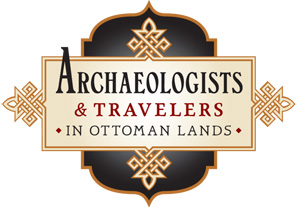 An article in Archaeology magazine highlights a new exhibition at the University of Pennsylvania Museum of Archaeology and Anthropology entitled Archaeologists & Travelers in Ottoman Lands. The exhibition opened last September and will run through June 26, 2011. Archaeologists & Travelers in Ottoman Lands focuses on the University of Pennsylvania’s Nippur Expedition, and in particular, the lives of three men involved in the excavations of Nippur: Osman Hamdi Bey, John Henry Haynes, and Hermann Vollrath Hilprecht.
An article in Archaeology magazine highlights a new exhibition at the University of Pennsylvania Museum of Archaeology and Anthropology entitled Archaeologists & Travelers in Ottoman Lands. The exhibition opened last September and will run through June 26, 2011. Archaeologists & Travelers in Ottoman Lands focuses on the University of Pennsylvania’s Nippur Expedition, and in particular, the lives of three men involved in the excavations of Nippur: Osman Hamdi Bey, John Henry Haynes, and Hermann Vollrath Hilprecht.
Featured are two paintings by Osman Hamdi Bey: “Excavations at Nippur,” which has never before been on public exhibition, and “At the Mosque Door,” which is shown for the first time in one hundred years. Also shown are about 50 photographs by Haynes, whose contributions as an archaeological photographer are only now being recognized, and more than 40 artifacts from the Nippur expedition (1889–1900), including a Parthian “slipper” coffin, Sasanian incantation bowls and glass, and numerous Sumerian cuneiform tablets.
The Nippur Expedition was the first American expedition to the Near East and lasted from 1889–1900. You can read background to the exhibition at the museum’s website and in the article in Archaeology. The exhibition has a companion website here.
For those interested, there is also a book by Bruce Kuklick that tells the story of the Nippur Expedition, Puritans in Babylon: The Ancient Near East and American Intellectual Life, 1880-1930 (Princeton: Princeton University Press, 1996). It recounts the institutionalization of ancient Near East studies in American universities, the hardships of Middle East fieldwork in the 19th century, and the intramural disputes and posturing of the Nippur Expedition’s staff and researchers. The stories of some key personalities ended tragically, with reputations ruined and careers destroyed. (Kuklick also touches on the role ancient Near East studies played in the secularization of universities, and how many scholars working in these disciplines forsook their religious convictions. “The paradox in the evolution of Near Eastern studies was the manner in which the pursuit of Bible truth might undermine the truth of the Bible.” For him, Christian scholars are a curiosity because they are “a stunning counterexample to easy generalizations about the secularization of higher education in America.”)
Additional photos from the University of Pennsylvania’s Museum of Archaeology and Anthropology can be seen here.
HT: Claude Mariottini